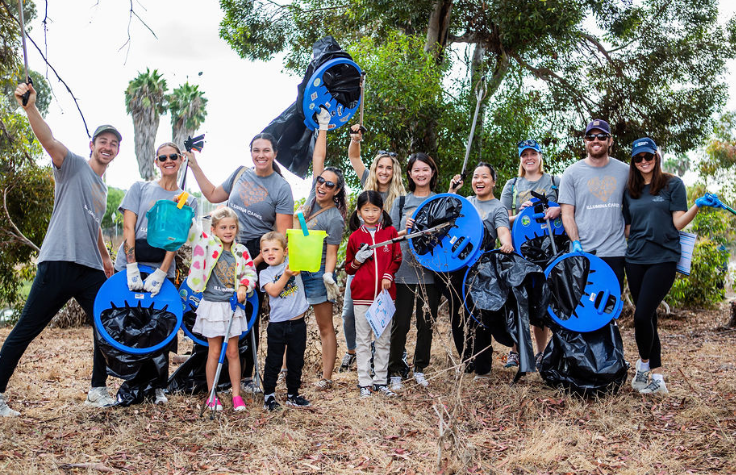
February 10, 2025
Shane Liddelow, PhD, is a neuroscientist at NYU Langone Health who investigates a rather ornery and elusive target: astrocytes—the brain cells that help keep neurons in line. Sometimes he wishes he studied another cell type.
“We joke in the lab that, if you were trying to make an atlas of cells and cell states, you would never pick astrocytes—you would pick neurons or oligodendrocytes,” Liddelow says. “It’s not that I don’t want people to study astrocytes—I desperately want people to do that—but they should know this is the wrong cell type for researcher happiness. They’re just so hard to capture.”
If neurons are like unruly teenagers, astrocytes are like attentive parents—and their duties are broad. They help form and eliminate synapses, regulate neurotransmitters, and generally work to keep their neural microenvironments neat and tidy. From a research perspective, astrocytes read the conditions around them and react accordingly, which has important ramifications for many diseases.
Liddelow’s lab studies astrocytes linked to central nervous system disorders, such as Alzheimer disease, Huntington disease, as well as bacterial infections. Each of these pathologies generates its own tiny subpopulation of reactive astrocytes—the cells he wants to study.
Once Liddelow has captured and sequenced these cells of interest, he can mimic their unique genetics in a model organism to study their function. However, because the astrocyte subtypes he studies are so rare, it’s challenging to collect enough of them to have confidence in the sequencing results.
“If we start with 500 cells, we’re only getting one, two, or five of any particular subtype,” Liddelow says, “and we don’t have the statistical power to say they are actually different and not some artifact.”
Scaling up
To get the statistical heft he needs without breaking the bank, Liddelow has embraced pre-templated instant partitions (PIPs). PIPs are like tiny test tubes that separate complex mixtures of cells into manageable portions, which makes them ideal for capturing target cells for RNA sequencing. With VR���˲�Ʊ Single Cell 3' RNA Prep, his lab can sequence hundreds, or even thousands, of astrocytes and get detailed information about each subtype.
VR���˲�Ʊ Single Cell Prep gives Liddelow incredible flexibility. Unlike other single-cell technologies, PIPs don’t require complex microfluidic instruments or consumables, which reduces both cost and complexity. He can capture and sequence a larger endogenous representation of the astrocytes without enrichment—investigating subpopulations that make up less than one percent of all the cells in a sample. He can also add in other neural cells to study the contextual signals that make these reactive astrocytes react in the first place.
“Single Cell Prep helps us sequence lots of astrocytes, but it also allows us to investigate thousands of neighboring non-astrocyte cells to see how they are interacting,” he says. “We could have done this before, but it would’ve been prohibitively expensive because we would’ve had to run the same sample multiple times for each cell type. Now, we just do it in one big pot.”
In addition to being scalable—Single Cell Prep can sequence 2000 cells as easily as 200,000—it checks off a lot of important research boxes for Liddelow and other neuroscientists. The technology readily detects cellular changes linked to specific mutations, works well with viral systems that knock down or turn off genes, preventing them from expressing. The technology is also compatible with diverse model organisms, including the roundworm Caenorhabditis elegans, mice, rats, nonhuman primates, and even roaches.
Democratizing single-cell research
Liddelow is also impressed with Single Cell Prep’s ease of use. He recently collaborated with , a community lab in Brooklyn, New York. Nonscientists who had never worked with single cells before quickly learned how to use the PIPs, and eventually sequenced the captured cells on an VR���˲�Ʊ MiniSeq.
“These were people who had never stepped foot in a lab and, in a weekend, generated single cell RNAseq libraries,” Liddelow says. “They did the sequencing and analyzed the data using the same chemistry that we used a week later to sequence a million cells from a mouse brain.”
Single Cell Prep has changed how Liddelow and his colleagues interrogate astrocytes, and that’s been a big deal for the lab. But he’s quick to point out that he works for an incredibly well-resourced institution, which gives him access to even the most expensive technologies. In his opinion, Single Cell Prep’s main benefit is that it opens up single-cell sequencing to virtually any lab, regardless of its means or expertise.
“You could be a power user or be running a small pilot,” he says. “It doesn’t matter; the chemistry is the same. I’ve never seen a single-cell technology that is more approachable for nonexpert users and cost effective for small labs and institutions. That’s really important because, above all else, we should always be striving to make science more accessible.” ◆


